By Sean Pearson
Area Size: 45 length, 5 yards wider than the penalty area on each side.
Time: 15 mins
Players: 7 v 6
Objectives
- To understand if the team can counter attack or maintain possession
- To decides how the ball should move forward
Set-Up
Depending on the age and physical capability of the players you coach the area should go just under the halfway line, however you can adjust the distance how you see fit. The defending team is in a 4-2 formation with a GK and the attacking team is in a 2-3-1.
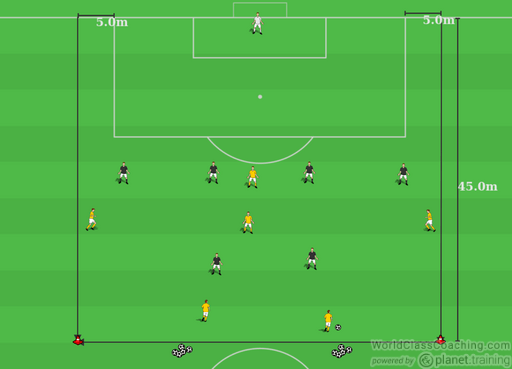
Execution
Firstly, in order to perform attacking transition your team must first defend. With 2 midfielders in the center of the field the attacking team’s easiest open pass is out wide. The job of the defense is now to make the area around the ball as compact as possible to deny penetration and force mistakes. The FB engages the winger and the rest of the defense slides across. The midfielders also slide and drop down to stop penetration. The attacking team attempts to score in the goal the team that transitions scores by moving the ball past the end line, by pass or dribble.
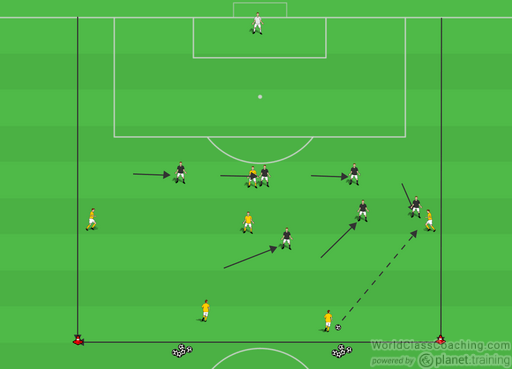
When the defense wins possession the first thought should be can we go forward? The second question, if the answer to the first is yes, is how? Should the player in possession drive forward with the ball (Red1) or pass the ball (Red2)? Then if the they pass should the receiving player then (Blue1) Drive or (Blue2) pass? This is your preference as a coach, my preference is generally, if there is space, to drive at speed. But the ball moves faster than players so if there is a teammate in a better position then pass.
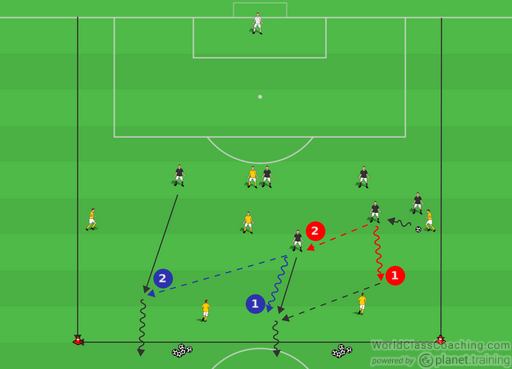
If the attacking team plays into the #10, again the team compacts the space around the ball to stop penetration and force a turnover.
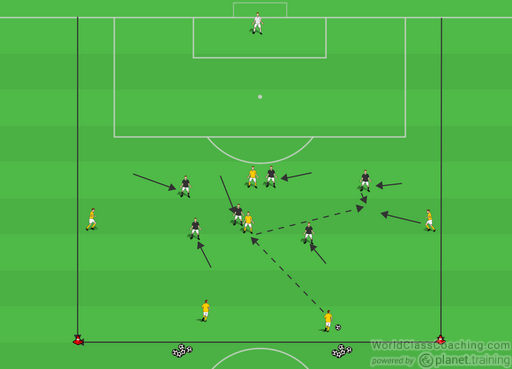
When the defending team wins the ball, if there is no space to go forward quickly then players have to make a decision of where to go. Do they pass forwards or backwards? But now the mentality changes to build up play (still attacking as you have the ball) over quick counter attacking.
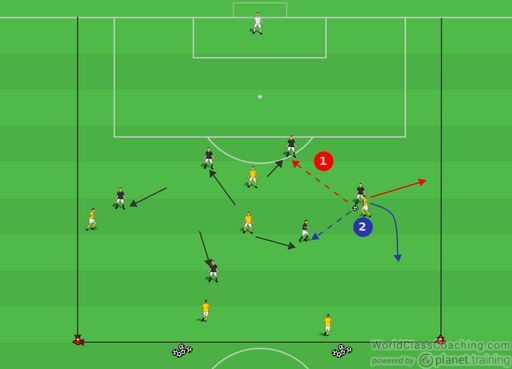
If your players do go backwards and the attacking team press, there is the option of your GK playing over the top of them into the space behind them. For this your FB’s will need to be aware of the space and make forward runs into the area.
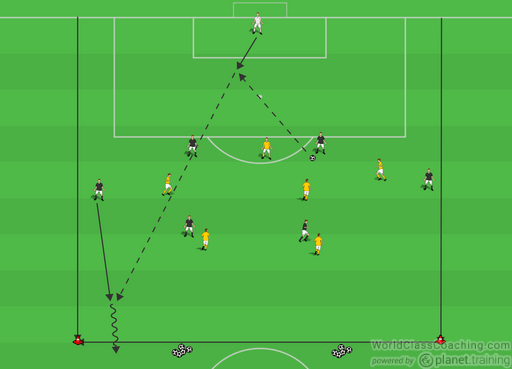
The important thing your players must understand and recognize is if they can go forward, then when and how they can. If they can’t they must understand that there are other options. Attacking transition is as much about recognizing when you can counter attack as it is about the actual attack.
Variations
- Play with different formations
- Set a time limit of crossing the end line if your players decide there is space to counter attack.
- Add a line the last players must reach as the ball crosses the end line to force the whole team forward at the same time.
By Sean Pearson. Sean is also the author Coaching Team Shape in the 3-3-1, Coaching Team Shape in the 4-2-3-1 and Coaching Team Shape in the 4-3-3


